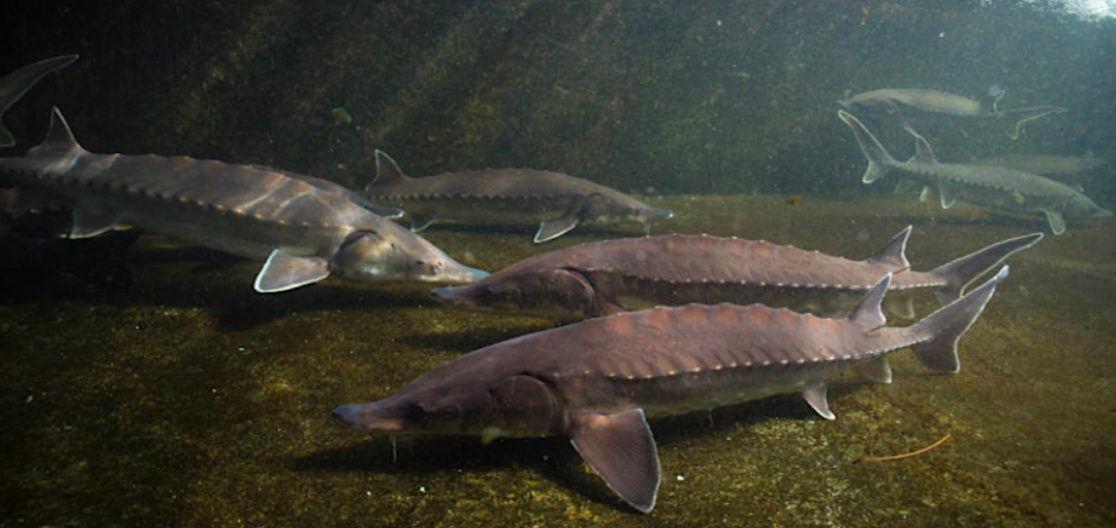Picture this: You’re out on a fishing boat one day on the James River. It’s a beautiful crisp September morning and the slight breeze out of the southwest is the cherry-on-top to what’s shaping up to be a perfect start to your day. Just when you think, “It couldn’t get any better than this?”, a massive shape bursts forth from the water off your bow! It soars into the air several feet before careening back to the water in a tumultuous crash, leaving your jaw dropped and your passengers exclaiming, “What was that?!”
That…was an Atalantic sturgeon breaching the surface of the water. An ancient species of fish native to the James River that, until recently, had almost disappeared.
Let’s start at the beginning. The sturgeon family has been around for a long time. 200 million years in fact. To put that into perspective, dinosaurs still roamed the earth and the continents were still mostly one big blob of land. Since then, not too much has changed with sturgeon. Sturgeon have truly earned the name, “Living Fossils.” They’ve persisted to this day with their evolutionary winning combination of herbivorous bottom-dwelling habits and anadromous lifestyles. They spend a majority of their long lives (nearly 60 years on average!) in the ocean but will always return to their birth river to lay their eggs. They can grow to as long as 14 feet and weigh as much as 800 pounds, with their average close to 8-10 feet and 180-250 pounds. Their toothless mouths suck up nutrients and small organisms from the bottom. As the largest species in the James River today, they are truly gentle giants.
In more recent human history, sturgeon were not always treated with the reverence or wonder they so rightly deserved. In fact, it was human-fueled overfishing for their eggs, to support a booming caviar industry in the 1900s, that almost led to their extinction. By the 19th century, the United States produced 90% of the world’s caviar. Atlantic sturgeon were second only to lobster among important fisheries, with landings estimated at seven million pounds per year just prior to the turn of the century. By 1910, with fishing outpacing the reproductive rate of the species, the market collapsed. Fisheries turned to more plentiful and profitable fish like shad, striper, bass and oysters.
Today, organizations like the James River Association, along with many other public and private entities across the east coast, monitor sturgeon and advocate for their protection. Sturgeon fishing in Virginia was outlawed 36 years before this species was officially deemed endangered in 2012. This, along with broader river habitat restoration efforts, has allowed our native sturgeon population the chance to recover unlike any other on the coast. While not fully recovered, our sturgeon have certainly come back from the brink. On any given day in autumn, go out to the James below Richmond and look for yourself. You might be so lucky to witness a sturgeon dramatically breach and know that this once plentiful prehistoric species really is making a great return.

Photo: US Fish and Wildlife Service

